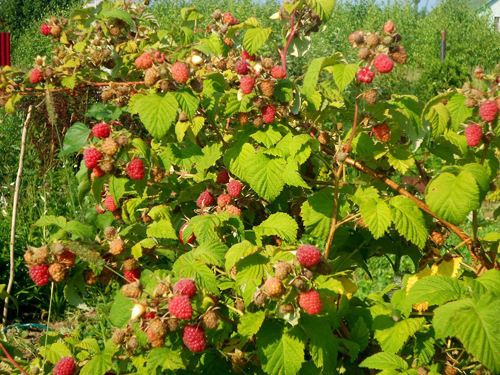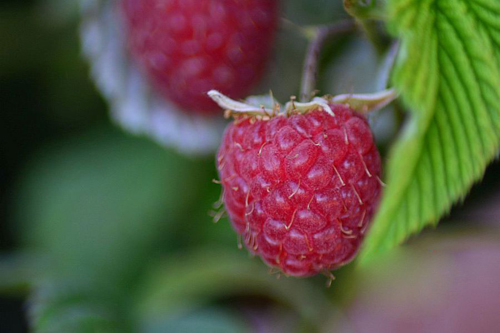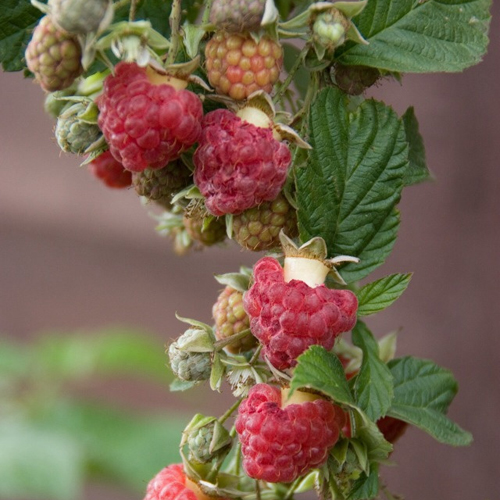Raspberry variety Meteor
Born in the 70s of the last century, the raspberry called Meteor still enjoys great success among farmers and amateur gardeners due to the very early ripening of the berries, as well as their excellent taste and universal use. The variety was obtained in the fields of the Kokinsky stronghold of the All-Russian Selection and Technological Institute of Horticulture and Nursery (VSTISP). The author of Meteor was an outstanding Russian scientist, a world-renowned specialist in this culture, academician of the Russian Academy of Agricultural Sciences Ivan Kazakov. In the process of hybridization, he used an old Russian variety that was born in the 19th century - Kuzmin's newsand also raspberries of Bulgarian origin Kostinbrodskaya. As a result of this crossing, and the subsequent selection of the best seedlings, a very promising form was born, which in 1979 was transferred to the state test, but only 14 years later - in 1993 it was officially registered as a variety entered in the State Register of Breeding Achievements RF.

Currently, Meteor is approved for industrial cultivation in many regions of our country - North, North-West, Central, Volgo-Vyatka, Central Black Earth and Middle Volga. A similar broad geography is observed in amateur gardening. In the relatively southern regions, our hero even shows signs of renovation, presenting his owners, albeit a small, but pleasant "bonus" in the form of a modest late summer harvest on young shoots. Moreover, if the berries of the main early harvest are formed of medium size, then remontant fruits turn out to be much larger. In addition, the advantages include the comparative resistance of plants to fungal diseases, good technological qualities of the fruits, as well as the weak stinging of the shoots, which greatly facilitates the work of the gardener.
However, it was not without its drawbacks, to which a number of owners refer to an insufficiently large berry, in their opinion, a large number of sprouts, susceptibility to damage by certain viral diseases and damage by a number of pests. However, in spite of everything, including the expansion of the assortment of raspberries every year, the army of our hero's fans remains very impressive.

Agrobiological properties
The growth activity of the bushes is significant. Plants can reach a height of 2 m. Their shape is not too spreading, but the tops of the shoots are drooping. The bases of young stems are strong, erect, greenish in color with a noticeable waxy coating on the surface. The thorns on the shoots are small, rather thin and short. The intensity of their appearance is very weak. This makes it relatively easy to tie the stems to the trellis, and then easily harvest from them. Garter shoots are required without fail, tk. under the weight of the fruit, they lean to the ground, and also risk severe damage in windy weather. It is most convenient to bend one-year-old stems to one side of the trellis, and two-year-old to the other. Subsequently, this will facilitate the collection of raspberries and the removal of unnecessary vegetative parts of plants after fruiting. Meteor's leaves are complex, consisting of three, less often five bright green medium-wrinkled leaves, located on a moderate length of petioles without signs of anthocyanin pigmentation. The shape of the leaf blades is oval with a point at the end, the profile is curving downward. On the edge of the leaflets there are medium-sized sawtooth teeth. Laterals begin to form approximately from the middle of the shoot, and therefore the fruiting zone is concentrated in the upper half of the stems. Fruit branches are characterized by an average length and degree of branching. Usually no more than 10-15 berries are tied on them. Replacement shoots appear quite actively - about 20-25 pieces per meter.Root suckers will heavily clog the row spacings and will require considerable effort to control. But the shortage of planting material for the reproduction of Meteor is definitely not threatened by its owners.
The main fruiting occurs on last year's shoots, and the variety actually opens the season, being one of the earliest ripening. The first berries ripen at the end of June, and the yield is very amicable. At the end of the growing season, in the case of a warm, long autumn, the plants can demonstrate their partial remontability, yielding more crops at the growth rate of the current year. In general, the typical yield of the variety can be up to 2 kg of raspberries per bush. In industrial conditions, productivity fluctuates, depending on the climatic conditions of the growing region and the level of agricultural technology, from 50-70 to 100-120 centners per hectare. In terms of harvests per unit area, our hero can lose to some other forms, however, taking into account the very early period of fruit ripening, he remains out of competition.
The size of ripe berries in the variety is average, height - 17-17.5 mm, diameter - about 18 mm. Their usual mass ranges from 2.5-3.5 grams, the shape is round-conical, the color is deep red with a noticeable shine on the surface. Drupes are moderately interconnected, due to which they break up into fragments only with a certain effort. The pulp of the fruit is relatively dense and firm, with a pleasant dessert taste, and, moreover, has a rather strong aroma typical of the culture. The sugar-acid index, which determines the degree of sweetness of the berries, is very high in Meteor, reaching 7.5-8 units. In particular, the total sugar content consistently exceeds 8-9%, while the titratable acidity is 1.1-1.3%. Mass fraction of dry substances 10-11%. Anthocyanins are present in 100 grams of fruits in an amount of 160-170 mg, vitamin P - 55-65 mg, and vitamin C - 23-27 mg.
The crop has a variety of uses. First of all, Meteor is eaten fresh with pleasure, which is facilitated by its high tasting ratings. For farmers who grow raspberries for sale, the variety is impressed by its early maturity, which allows it to start selling at a time of high market prices. In addition, an important positive feature for commercial use is the good transportability of the harvested crop, due to which the berries reach the shelves without damage or deterioration in marketability. In the processed form, they also retain their shape well, and the richness of the color makes compotes and jams especially attractive. All preparations for the winter are distinguished by high gastronomic characteristics and richness of the mineral and vitamin composition, which makes them very useful for the body in the winter period. Freezing is an additional option for keeping Meteora fruits fresh. After thawing, the berries practically do not lose their shape, taste and aroma.
In cultivation, the variety shows itself from the good side. It does not require excessive self-care and is able to grow in various soil and climatic conditions. The bushes are relatively frost-hardy, but they are not particularly drought-resistant, requiring a sufficient level of soil moisture during the growing season. At the same time, excessive dampness, and even more waterloggedness, is also unacceptable for them. When choosing a site, it is necessary to monitor the level of groundwater, because their shallow location can cause rotting of the root system of plants. The relief of the area should provide protection for the raspberry tree from strong winds that can leave the land without snow cover in winter.
The planting of bushes is carried out in a well-cultivated and fertilized soil. According to the recommended planting scheme, the distance between rows should be 2-3 m, and between plants in a row 60-70 cm.In the process of cultivation, one should take into account the increased resistance of Meteor to common fungal diseases, but low resistance to shoot gall midge, spider mite, overgrowth and purple spot. Based on this specificity, a plant protection strategy should be built.








